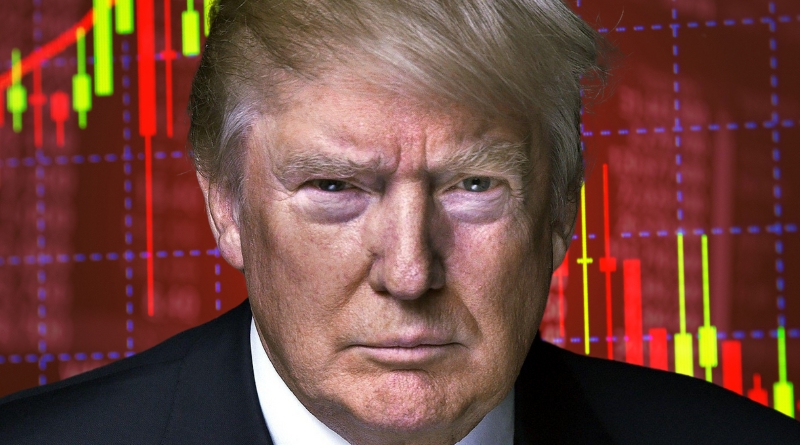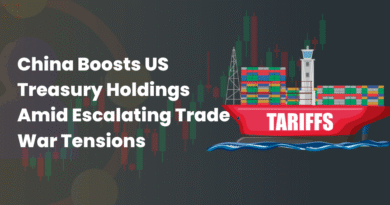Recession Fears Grow as Traders Predict Economic Downturn Ahead
Recession Worries Are Back — Here’s What Traders See Coming
The buzz on Wall Street isn’t just about interest rates or inflation anymore. More and more traders are betting that a recession could be right around the corner. If you’ve been paying attention to recent market movements, the warning signs aren’t hard to spot.
So, the big question is: Is a recession already baked into the market’s future? Let’s break it down.
Why Are Traders So Worried?
It all starts with how investors are positioning their money. When a large number of traders start shifting their focus from risky assets to safer ones, it often signals concern.
One clear indicator is in the options market. Bloomberg’s data shows that traders are piling into positions that would make money if the market drops significantly by September 2024. These protective bets imply many investors expect the economy to take a hit in the second half of this year.
This isn’t just a random hunch. Traders often notice subtle shifts in economic signals before the general public. It’s like seeing clouds gather before the storm hits.
So what could trigger a recession?
There’s no single reason, but a few big ones keep coming up:
- High interest rates are making borrowing more expensive for businesses and consumers
- Cooling inflation often signals weaker demand, which can slow growth
- Pressure on corporate earnings could lead to job cuts and weaker investment
- Global tensions and slower growth in other economies, like China, can ripple across the U.S.
If you’ve been following labor trends, job data is starting to lose steam too. That slowdown might be small now, but it could pick up pace if companies get nervous.
What Does the Fed Have to Do With It?
A lot, actually.
The Federal Reserve raised interest rates aggressively over the past two years to fight inflation. While that cooled off price increases, it also made loans, mortgages, and credit more expensive. Economic growth has been slowing, and while the Fed hasn’t officially announced a rate cut, traders are betting we’ll see one soon.
In fact, traders on Wall Street now think the Fed could start cutting rates by the end of the year, especially if economic numbers turn sour.
Want to understand more about what drives Fed policy and how it’s connected to recession risk? Check out our explainer on the impact of interest rate hikes on the market.
Historical Patterns We Can’t Ignore
History doesn’t repeat itself exactly, but it sure does rhyme.
In past downturns, traders started adjusting months before the economy officially went into recession. The 2008 financial crisis, for example, didn’t start with panic. It started with small cracks that grew over time.
Something similar happened in early 2020. The warning bells rang when bond yields fell and recession-protective trades gained momentum—before COVID-19 was officially declared a pandemic.
So while we’re not in a recession yet, some of today’s signals feel eerily familiar.
How Are Markets Reacting?
It depends on which market you’re watching.
- Stock Market: Major indices like the S&P 500 are still holding near record-high territory, but under the surface, traders are slowly shifting.
- Options Market: Traders are buying put options that profit if stocks fall. This kind of positioning is a hedge against downside risks.
- Bonds: Yields are starting to flatten, which often happens when traders believe a recession could lead to future rate cuts.
If you’re curious how traders position themselves in uncertain times, check out this post on the best indicators to predict market trends.
Should Everyday Investors Worry?
Maybe not worry—but definitely prepare.
If you’re investing long-term, market dips can offer opportunities. But it’s smart to have a plan for the short term too. Think of it like carrying an umbrella when the sky is grey. You might not need it, but it’s better than getting soaked.
Here’s how to stay resilient:
- Review your asset mix. Is your portfolio too tilted toward risk? Rebalancing might make sense now.
- Set aside an emergency fund. Having cash on hand helps you avoid panic moves during downturns.
- Focus on quality. Companies with strong balance sheets and consistent earnings often weather tough markets better.
Want more tips on adjusting your portfolio during uncertain times? Read our guide on how to build a recession-proof portfolio.
What Are the Key Signals to Watch Next?
If you’re trying to stay ahead of the curve, here are a few economic indicators worth watching:
- Monthly job reports – Slower hiring or rising unemployment can be early signs of trouble.
- Consumer spending – Weaker retail sales suggest people are tightening their belts.
- Corporate earnings – Many companies are already giving lower guidance for the next quarter.
- Interest rate updates – Any sudden shift in Federal Reserve communication can change market expectations overnight.
Plus, watching sentiment is key. Fear in the market can accelerate reactions. Keep an eye on the tools savvy traders use—see our breakdown on trading strategies using market sentiment.
Will the Recession Actually Happen?
That’s the million-dollar question.
Some analysts say the U.S. can avoid a recession entirely and pull off a “soft landing”—where growth slows without crashing. Others believe the Fed’s rate hikes are already doing damage, and we just haven’t felt the full effect yet.
Either way, argument on both sides is valid. So as investors, we need to stay informed, stay flexible, and most of all—stay calm.
Final Thoughts
Traders are sending a loud message: there’s a good chance we’ll hit economic headwinds soon. Whether that means a shallow slowdown or a deeper recession remains to be seen.
But instead of reacting with fear, use this window as a time to adjust, prepare, and reassess your strategy. The market is always moving—what matters most is how we move with it.
Want more recession-focused trading strategies? Our recent article on short-term strategies during market downturns is a great place to start.









